Test pieces are printed and im fairly surprised... They fit pretty damn well. With a few adjustments, i think it might do the job👀
Sad News Alert
Moira Rose is DEAD!
Im gonna print some test pieces for the dovetail. See u soon lol
So from the main truss, there is some more parts that stick out, and they need a support beam between them to keep them at the correct distance and to hand the front canopy bezel on. The thing is, im not really sure the best way to join the beams to the sticky out truss part.
This probably explains it better
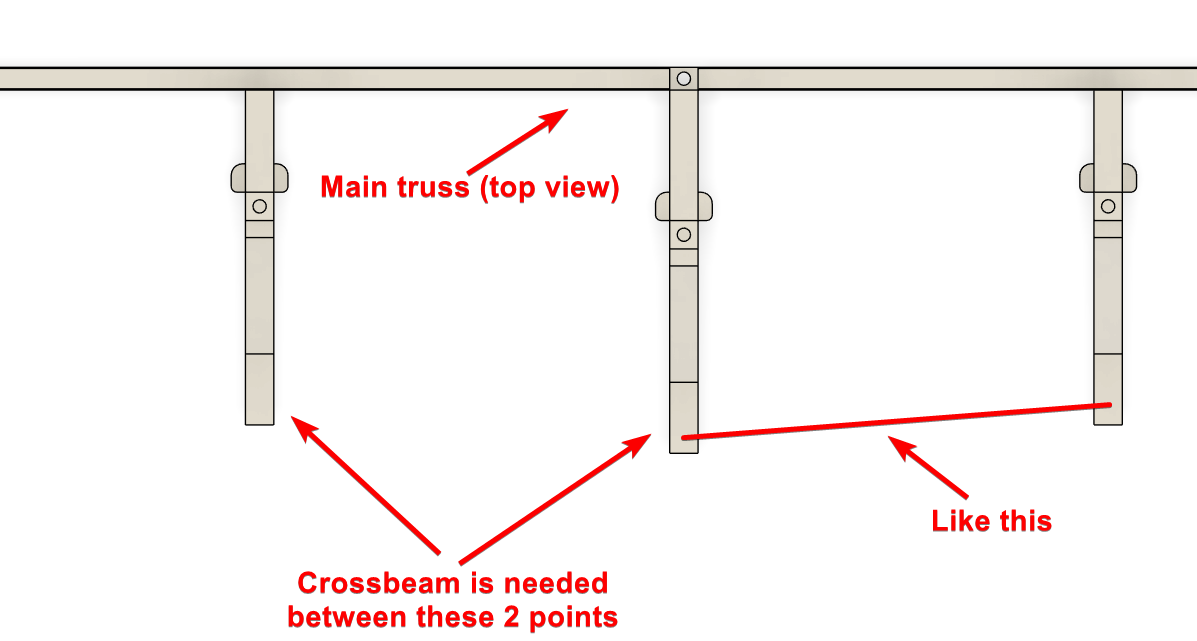
I dont want to increase the thickness of the truss, as it will look odd, and these parts will be visible in the final model (as they are on the original ride).
Originally i was considering using a single pin, with staggered crossbeams, that way the pin would secure 2 crossbeams. But it look really weird, and i wasnt happy with it.
Then i considered using slots, which the original ride uses, but because these are 3d printed, the slots would need to be fairly chunky, where as the ride uses metal, so it can be fairly thin. But i have some crossbeams that go between the sleepers on the ride, and they use slots, but are kinda crap, always popping out of place and such. But that could be simply because i didnt make the slots deep enough.
Now, im thinking about dovetail joints, but the width of the truss that holds the cross beams is only 5mm, so the dove tail would have to be 1.5mm thick on each side, with only 2mm of material between the 2 dovetails.
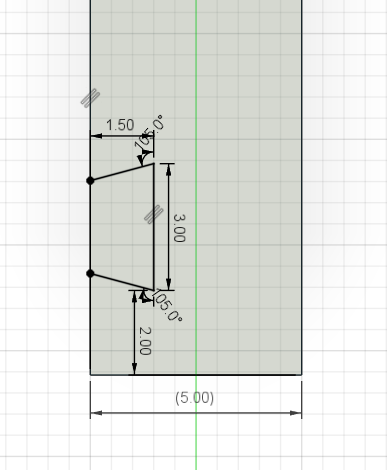
It would have 2 of the dovetails above, but... 1.5mm is VERY small...
So overall..
I think the pin and overlapping beams would be easiest and probably strongest, but is ugly.
The slots i have no confidence in them staying in place.
The dovetails i have no confidence in the ability to actually print them at such a small size.
Looking at that video i just posted, it seems i made the supports that extrude from the truss a little too sticky-outty. I made originally so that they lined up with where the posts would be if they were there, but looking at the video and some photos i found of the same waltzer, they appear to have a less pronounced curve.
🥰 FINALLY FOUND VIDEO OF BUILDING THE CANOPY 🥰
https://www.youtube.com/watch?v=JlEAjEHFQCQ
I have screwed a few of those eyescrews in, not all yet, the handrails seem to fit fairly well.
I was just looking at the cars, altho they are 99% complete, im thinking of reprinting them in 2 parts.
Printing in 2 parts would give me the chance to change the color of the base, which is usually blackish with chrome plate around the edge, but also, it will allow me to print the wheel mounts as apart of the base instead of separately.
At the moment, when the wheel mounts are printed separately, they are a bit of a bitch to glue in place perfectly aligned, even with little countersunk sections for it to sit in.
Incase you cant tell, im procrastinating doing the front canopy area😭
I have a bad feeling that i didnt add the correct holes for the handrails on the front posts that hold the truss up. I was just screwing in the eyescrews for the handrails and they look a little low 😭
Oh, i also forgot to actually measure the eyescrews to see if the length of the screw was ok, turns out, its not, It's to long for both eyescrews on either side of the posts to fit. To tackle this, im just using some flush cutters to trim them, Being as they are only 1mm thick wire, its fairly easy 🤷♂️
2 things
Number 1, I ran out of filament half way through a print. I brought the 2 pack of filament, and replaced the roll with the other roll from the same box, and it still printed 2 seperate colors. The quality control at eSun must be lacking 😭
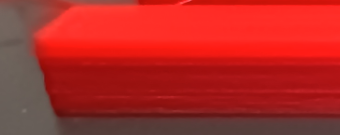
Number 2, I just put the front truss and the taller posts in place and the ride is super rigid now. I can shake the entire platform back and forth and its just the paybox that wobbles
Excuse the awful picture, i cant be bothered to take a better one.
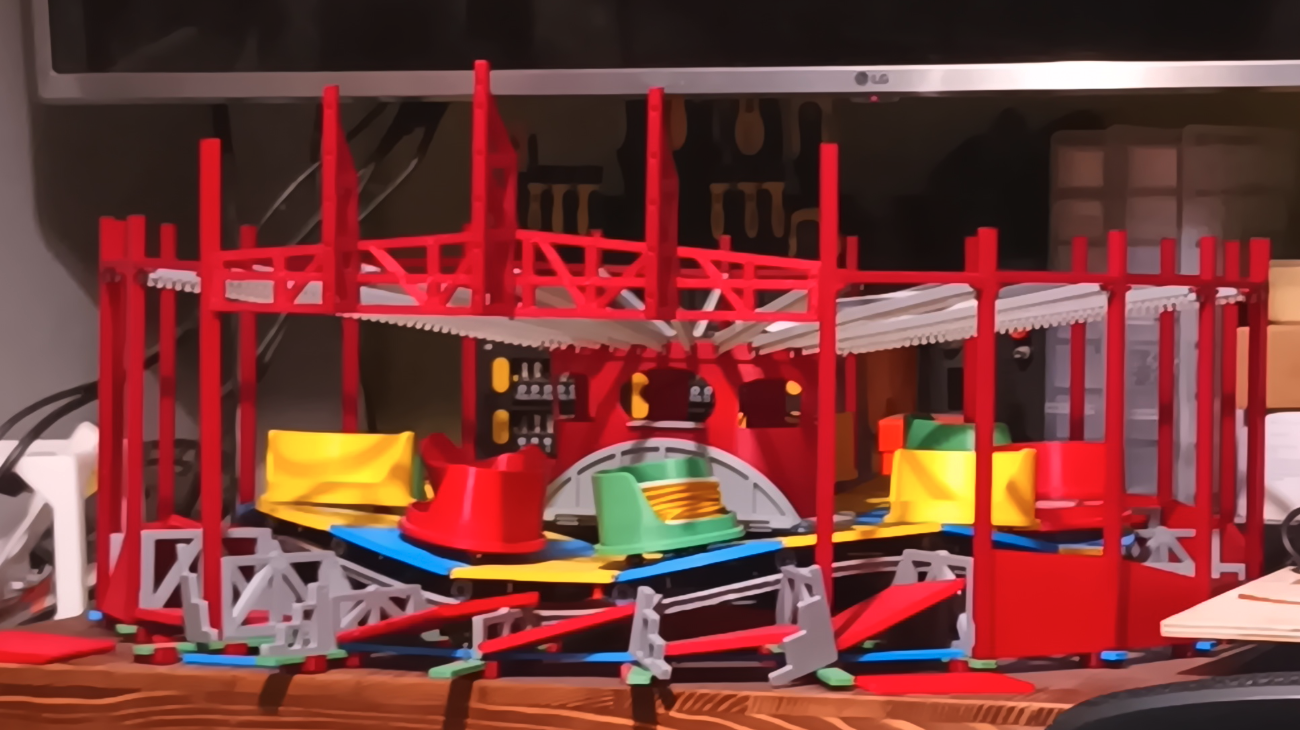
Im a dumbass. I put all the posts in place yesterday and completely forgot to put the eyescrews in 😭
Same brand filament, Same color, Same print profile, Same printer, Yet different colors😭
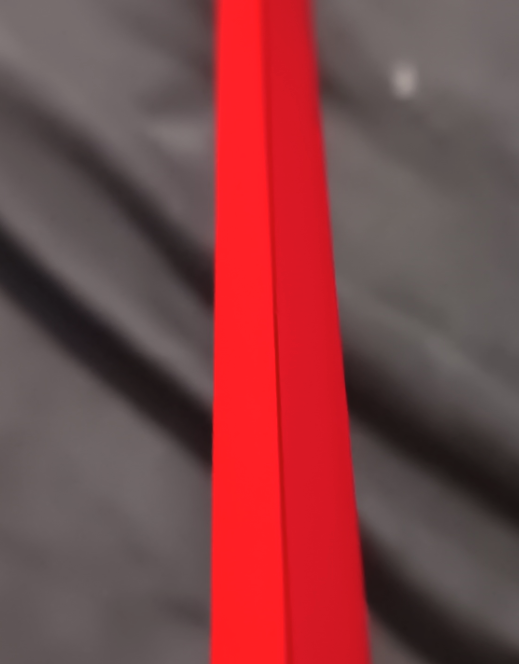
I printed the new posts and crossbeams, The entire waltzer is way more stable now.
I can shake the posts and the thing that moves the most is paybox, which is understandable as its on a pretty small column connecting to the motor mount.
I forgot to print the front 2 posts for the truss so im gonna print those today at some point along with a new truss, as i moved some of the mounting pins.
The only thing im unsure of in general regarding the waltzer is how to do the front canopy. The main videos im working from, the blackpool central pier youtube videos, they dont cover anything beyond the rafters being installed, So all the roundings and the canopy construction isn't covered. Ive looked around on youtube, but there doesnt appear to be any for videos that show that part of the build up process, not for a maxwell waltzer anyway. So im basically just going off of pictures from the NFCA.
Oh, i forgot to mention, I increased the width of the handrails by half a mm on each side, so 1mm total, Not much, but it made me feel better 😂
Also, ive decided to leave the posts as they currently are instead of using the eyescrews for the upper crossbeam, The upper crossbeam will be hidden most of the time, and i dont feel like screwing 100 of those little bastards in, And i feel like the eyescrews would allow a little too much movement, which i dont want.
The more i type eyescrews, the more i realize that its probably not the correct name for them 😂
I just started printing the posts again with some updated holes and such and i was thinking... the modification i made to it the other day, the one with the top crossbeam, im starting to wonder if i should have used eyescrews for the top crossbeams.
It would mean more hardware, but it might look better? hmmm
Im starting to wonder if i have the size of the handrails correct.
The more i look at pictures of waltzers, the more i think the "tube" of the railing is to wide, as well as the width and height. I feel like the height needs to be increased, and maybe a little of the width... hmmm...
This is my model
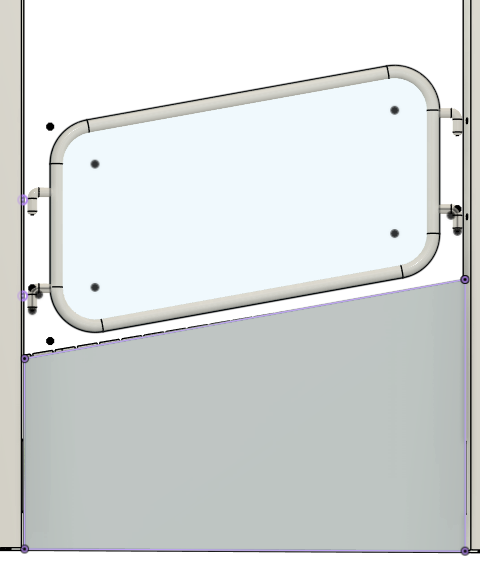
This is a real waltzer

The more i look at it, i think my shutters are a little taller, which would make the handrails a look a little smaller i think...
Im still a little worried about the durability of the chrome. But when looking around, ive found this thread on modelcarsmag.com, the result looks pretty good, so ive ordered some from ebay, Probably wont arrive for 6 weeks, but thats fine, i have plenty to work on.
https://www.modelcarsmag.com/forums/topic/144033-good-clear-coat-for-molotow-chrome-found/
I couldn't resist 😭
I was just poking at the chrome despite it only drying for like 2 n half hours.
Honestly... Its kinda OK, It didn't rub off, however it was visibly dull when compared to the untouched part.
Fairground rides wont be pristine, and looking at some photos of waltzers, most of the handrails look more like brushed steel than chrome, So im OK with the finish being dull.
I will say tho, it comes off fairly easy when using a nail to scrape it, but to be fair, some of it was still a little tacky / sticky 🤷♂️
Over the last couple of days ive been working on the handrails for the waltzer.
When i first started the waltzer i did actually make some of the old wooden handrails (but 3d printed obviously), i printed one out to test and it looks nice. But the modern waltzers are usually upgraded to metal handrails, presumably for safety and being less fragile 🤷♂️
These are the old handrails
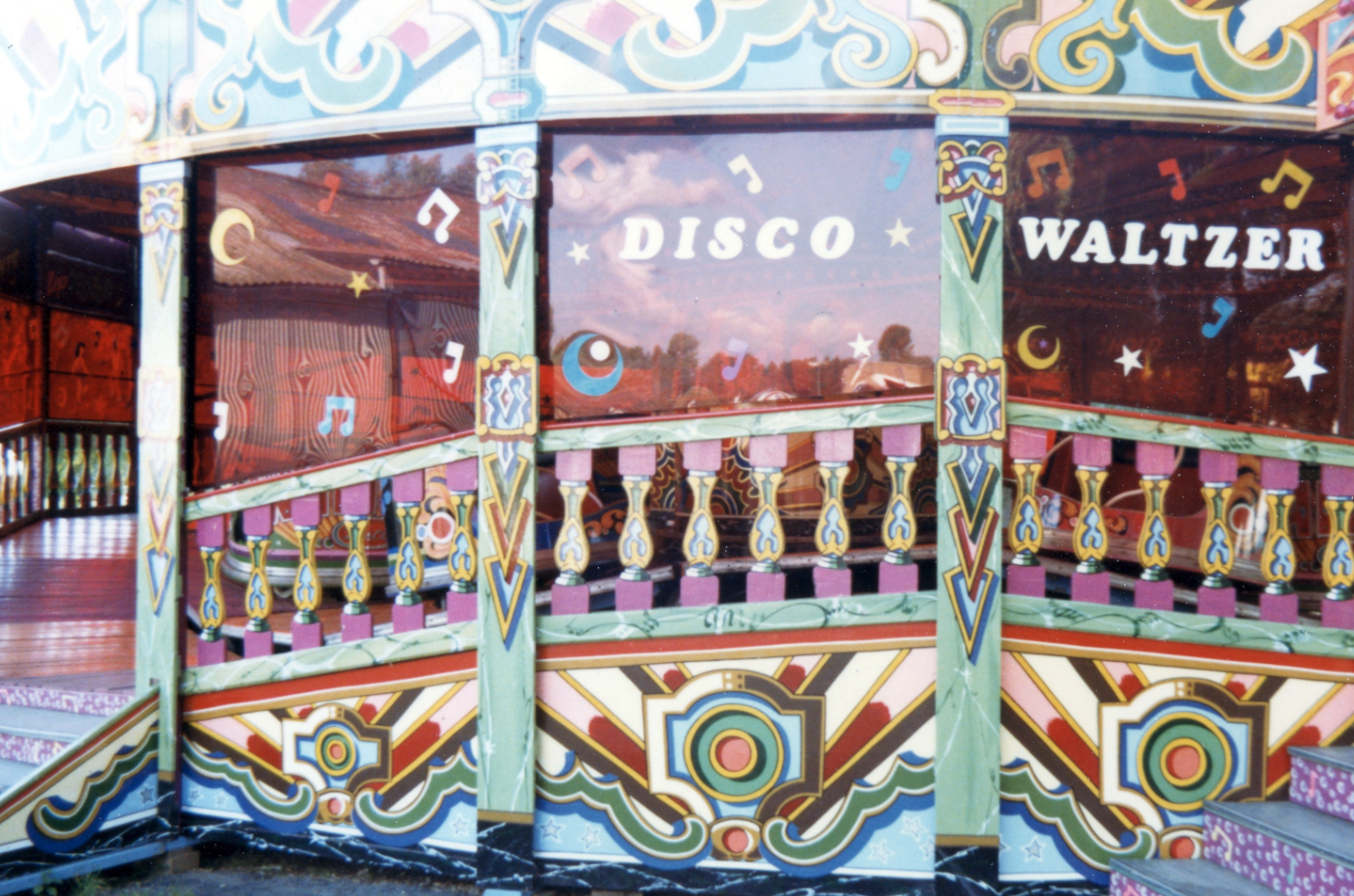
These are they "new" handrails most waltzers use.

Anyway, the biggest hurdle i have come across when working on these newer handrails is the fact they are metal. I had some 1.5mm metal rods left over from hinge joints on the moving platforms, So i thought i would bend them into the shape i need, I even brought a little jig thing that is designed for it, but its WAY harder than i originally imagined.
The spring back from the metal is pretty substantial, and although the handrails are a fairly basic shape, it was really difficult. I would also need to use the same method for the safety bars in the waltzer cars, and those bars have some pretty tight turns, so i dread to think how hard that would be to do accurately.
I looked around for some "metal" 3D printing filament, but what was out there was expensive, and it wasn't particularly metal looking to be honest. Then i watched a video by Peter Brown, he did a few "stained glass window" projects that used electroplating to cover some lasercut plywood with copper, But that was way overkill for what i need it for.
I had a look around and found people talking about using chrome paint or markers, which i wasnt aware was a thing, So found a Molotow Chrome Marker on amazon.
Honestly i wasn't expecting much, but holy cow, the results i got look incredible.
The picture below was a test print of a partial "metal" handrail i made the other day, i used the marker on it...
Tell me that dont look good...
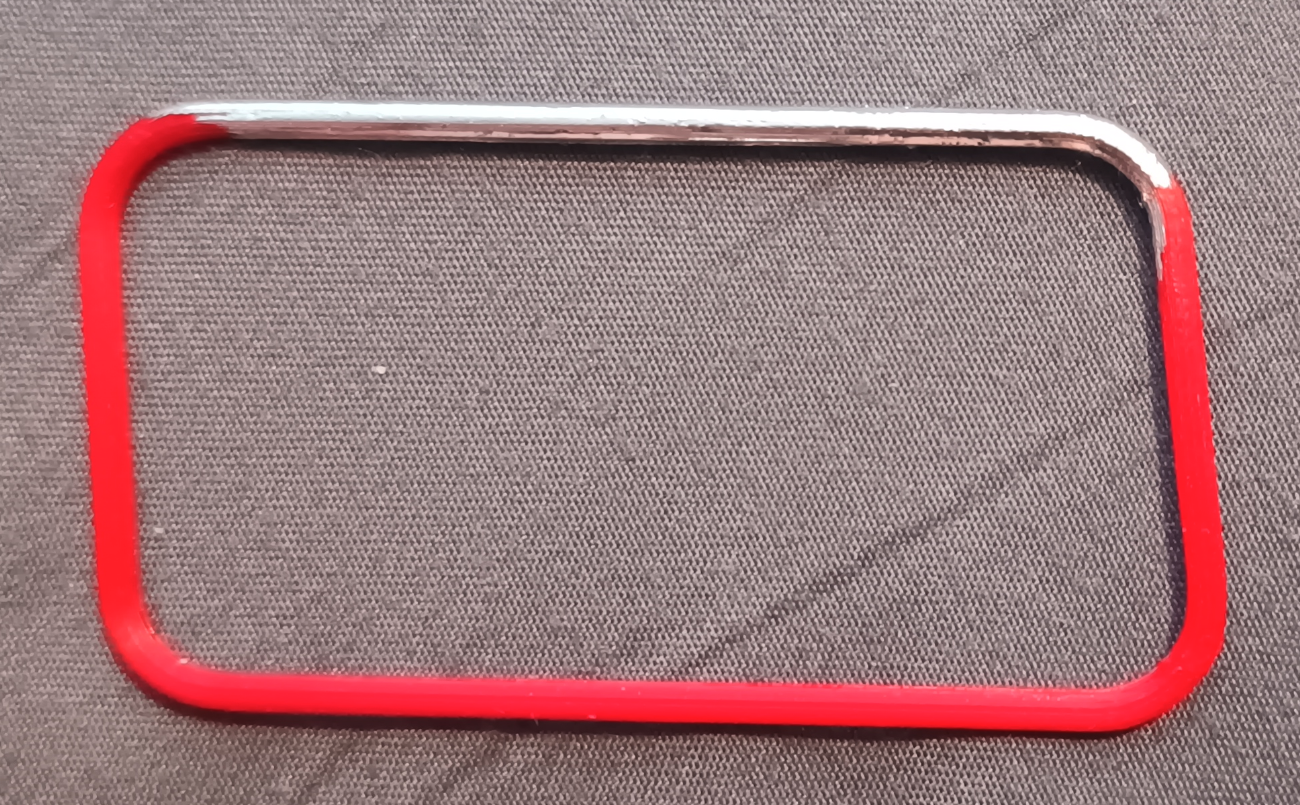
Ive looked around and im not sure how durable it is, nor how long it takes to dry (the pen came with no instructions) but other people have used the spray cans and air brushed it and say it can take 2-3 days to fully dry.
A few people have mentioned that its pretty delicate and to use a clear coat on it, but then some other people say that clear coat will dull it and basically just make it silver colored without the shininess.
Im really impatient, so i will probably start poking it pretty soon to see how long it takes.
Its fine, its just a test piece😂
ok, so im a dumbass.
I wondered why the last time i printed the posts the holes for the handrails were so fucking small, its because i did actually find some eyescrews that would work. I just completely forgot about them. Now the posts i printed today all have the larger holes 😭
I worked on the waltzer a little bit today.
I changed how the upper crossbeam connect to the post.
I had previously changed it from its current version, but i decided that its just to complicated.
I've modified the posts so they have 3 protrusions at the top of the post, one for the rafter, and 2 for the crossbeams.
Then the crossbeam itself has a hole on each end for a 2mm pin, which allows it the sit nicely in the post mounts.
The crossbeam with its holes.
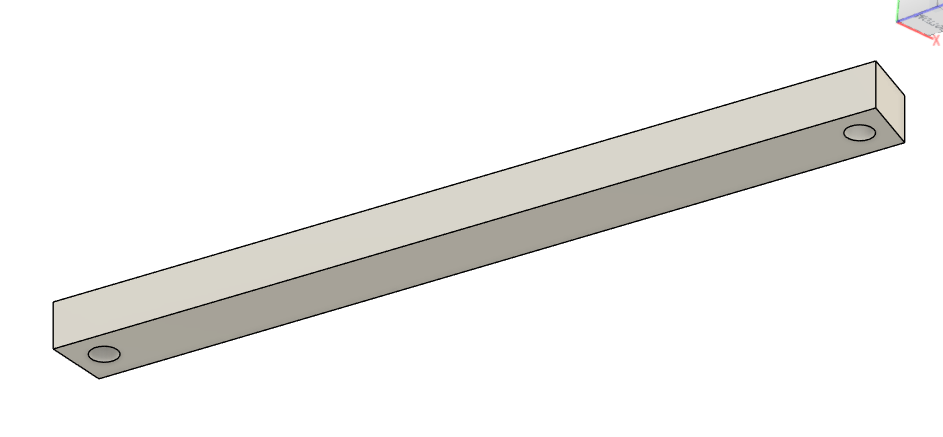
The post and crossbeam in place
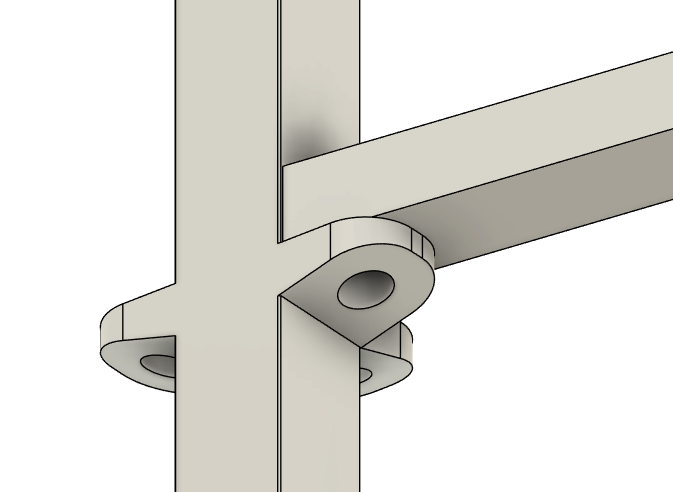
I was originally trying to avoid having the 3 mounts on the post, but in the end, its a pretty damn close model to an original machine, so a few differences that wont be visible when fully built is acceptable i think.
Not sure what im gonna do about the handrails yet. Im hoping i can get away with some eye screws. Im just not sure if i can get them small enough.
Website updated to fix the pagination stuff, thoroughly untested😂